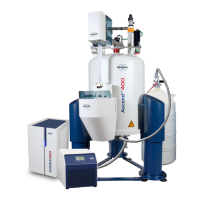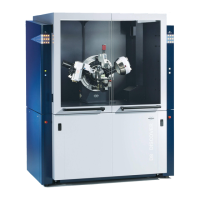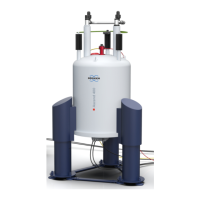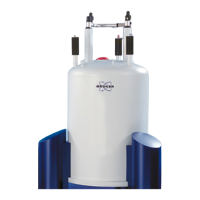Environment and Site Survey Measurement
60 / 120 H157654_9_011
7.3.4.1 Measuring HF Fluctuating Fields
Radio Frequency Interference measurements should be conducted using a spectrum ana-
lyzer. The analysis should be done for the resonance frequency of each of the nuclei of inter-
est (proportional to the 1H resonance frequency of the spectrometer). The minimum fre-
quency sweep is 400 kHz.
7.3.4.2 Most Commonly Studied Nuclei
Nuclei NMR Frequency (MHz)
Magnets 200 300 400 500 600 700 750 800
1H 200.000 300.000 400.000 500.000 600.000 700.000 750.000 800.000
2H 30.701 46.072 61.422 76.773 92.124 107.474 115.155 122.827
11B 64.167 96.294 128.378 160.462 192.546 224.630 240.683 256.740
13C 50.288 75.468 100.613 125.758 150.903 176.048 188.629 201.204
15N 20.265 30.423 40.560 50.697 60.834 70.971 76.043 81.221
19F 188.154 282.404 376.498 470.592 564.686 658.780 705.858 753.003
27AI 52.114 78.204 104.261 130.318 156.375 182.432 195.469 208.647
29Si 39.730 59.627 79.495 99.362 119.229 139.096 149.036 159.147
31P 80.961 121.495 161.976 202.456 242.937 283.418 303.671 324.224
Table7.7: List of Most Commonly Studied Nuclei and Corresponding Resonance Frequencies
7.3.4.3 Guidelines for HF Interference
As a general guideline the level of any HF interference should be less than an electrical field
strength (detection: max. peak) of 80 dBuV/m with a minimum Resolution Band Width (RBW)
of 300 kHz at the side of the magnet.
7.3.4.4 Reducing HF Interference
Screening a site for possible HF Interference is complicated and expensive. Shielding of the
laboratory with a Faraday cage is a possible solution, though having to take such measures
is quite rare.
When designing and manufacturing the Bruker spectrometers, care is taken to provide ade-
quate shielding and the instruments rarely suffer from interference in normal HF environ-
ments. Furthermore, the advanced BSMS digital lock system - included with all Bruker
AVANCE NEO spectrometers - allows a shift in the 2H lock frequency with certain limits. This
may allow enough variation in the absolute magnet field strength to shift the NMR signal
away from that of local broadcasting frequencies.
HF interference may occur between two or more spectrometers located in close proximity
and operating at the same nominal 1H resonance frequency. These problems can be avoided
by energizing the different magnets at slightly different fields, such that their operational fre-
quencies are separated by ~ 200 kHz at the nominal 1H resonance frequency.

